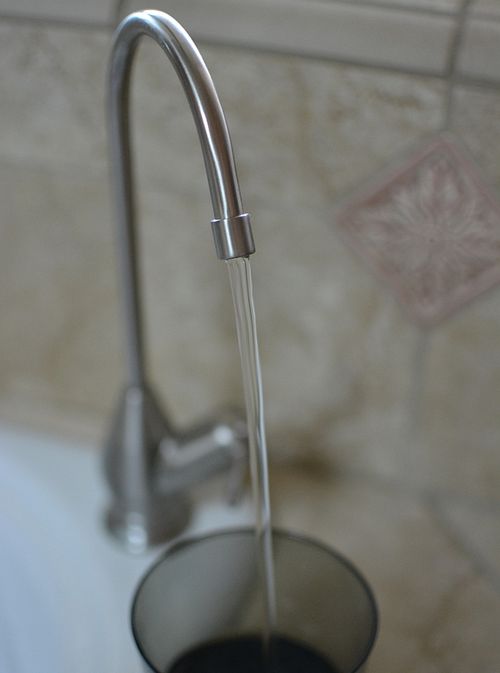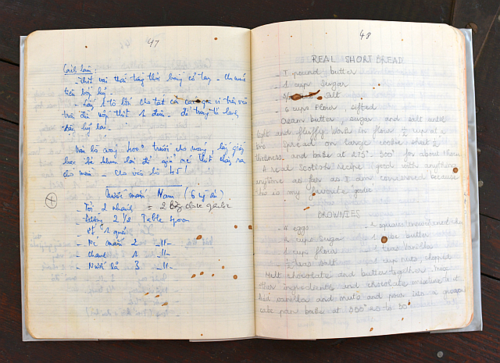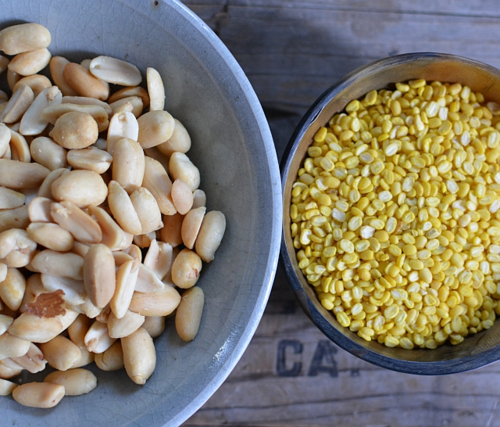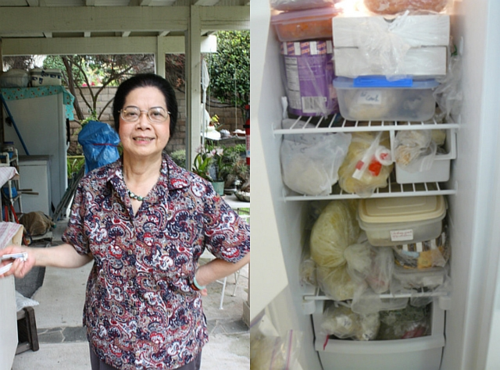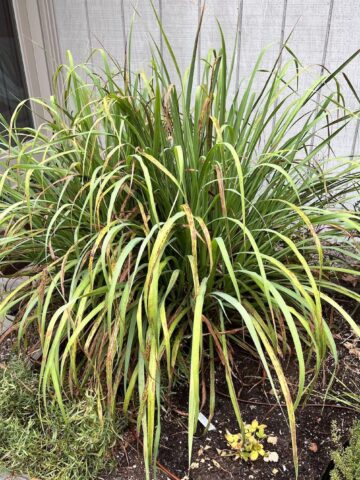As soon as my family arrived at the Camp Pendleton refugee resettlement camp on April 24, 1975, my dad was itching to leave. He’d wanted to live in America since he was young but didn’t have the opportunity to until he was 45 years old. The circumstances were not ideal. He’d left behind his home, career and status to start anew with his wife and five kids. Dad had the names and phone numbers of two Americans that he’d befriended in Vietnam. It was a coincidence that one of the men, Robert Beals, lived 20 minutes north of Camp Pendleton. Mr. Beals agreed to sponsor us out of the camp on May 24. We were among the first Vietnamese people to resettle in the U.S. after the Fall of Saigon.
Finding your way in a foreign country is never easy. Those first few years were full of poignant surprises and wonderful discoveries. Yesterday I asked my mom and chef friends Diep Tran and Eric Banh to recall the foods and appliances that impressed them most during those initial years. Here’s a short list of what we came up with:
Potable Water: The first meal my family had outside of the refugee camp was at the Beals’s home. When Mrs. Beals offered Mom water to drink from the tap, Mom was skeptical.
In Vietnam, potable water didn’t flow from faucets. You had to boil it or use some other means to purify it. I remember iodine tablets from my youth in Saigon. My mom thought the American water would harm her (Hello, giardia?). She hesitated before respectfully taking a sip from the glass. Of course, nothing happened to her. When we got home, my mom told us how scared she was. We laughed off our naivete and to this day, still chuckle about such a startling difference between Vietnam and America. You still cannot drink water from the tap in Vietnam.
Butter, White Sugar and Flour: Like the precious and somewhat ghetto chicken backs rice that I wrote about, ingredients like butter, sugar, and flour were considered luxury goods in Vietnam. They were pricey, specialty items associated with western foods. That’s why my mom and sisters took to baking up a storm after we arrived.
In Vietnam’s tropical humidity, my mom managed to make her own puff pastry but in America, she got to practice making the dough for Franco-Viet breakfast treats called pates chaud (pa-te so), puff pastry rounds filled with pork, onion and little cognac. My sisters experimented with short bread and brownies, adding the recipes to my mom’s recipe book that she brought from Saigon. In our refugee minds, we were suddenly living large.
Skinned Peanuts: Roasted peanuts are a Vietnamese staple. To replicate our favorite Vietnamese salads and the like, we initially did just like we used to in Vietnam: We bought skin-on peanuts, roasted them in a skillet, and while they were warmish, rolled them between our hands or recycled cloth rice sacks to remove the papery skin. “Burlap would have been ideal but we did the best with what we had,” my mom reminded me. It was a messy, time consuming task.
One day, we realized that American supermarkets sold skinned, roasted and unsalted peanuts. Our entire family had a V-8 moment. I still love freshly roasted peanuts but am relieved that that’s not part of my Viet food routine. (To refresh such store bought peanuts, I toast them in a skillet and let them cool before using.)
Skinned Mung Beans: Unhulled mung beans (dau xanh) – the ones with the green skins intact, were also part of the culinary drudgery of my 1970s youth. We’d soak the beans and rub off the skins for sticky rice dishes and dumpling fillings. It was several years before split, hulled mung beans (they look yellow) were available at Asian markets. Hallelujah, no more sorting and picking out the green skins! We were saved! Nowadays, Asian markets carry more yellow hulled mung beans than the skin-on green ones.
Bay Shrimp: “Shrimp used cost less than fish and meat in Vietnam,” my mom said. That’s why we enjoyed a lot of shrimp -- peeling and deveining big ones, eating small ones with the thin shells intact.
When we came across cooked baby shrimp and bay shrimp, my parents did a double take. They were relatively inexpensive too. We bought some for Vietnamese goi dua leo (goi dua chuot), a cucumber and shrimp salad. (There’s a great recipe in Into the Vietnamese Kitchen, page 46).
They tasted great and my parents wondered, who would want the job of shelling all those tiny shrimp? We sat around the dinner table feeling sorry for the people who got stuck with that tedious job. Then someone said, “They must do it by machine.” We all nodded in agreement. Had we been able to Google that in the 1970s, we would have come across this video of a shrimp peeling machine.
Polished Rice: Chef and restaurateur Diep Tran of Good Girl Dinette in Los Angeles was not able to leave Vietnam until 1978. Life was harsh after the Fall of Saigon in 1975. The communist cadres took over part of their home and her parents had to regularly attend party meetings.
Diep remembers having to carefully clean and remove the husk from rice grains before cooking them. There are other aspects of those years that weigh on her – as well as foods that she misses dearly. But those rice grains that weren’t well polished? Not something Diep longs for.
Affordable Refrigeration: My mom was among the lucky people in Vietnam to own a refrigerator early on. It was because my father was a military governor and later on a business consultant; he had access to certain things. “There were no freezers available,” she told me. “If you wanted a refrigerator or television, items that were imported in limited quantities, you had to get a ticket for it and wait for the shipment to arrive. Who knows when that would happen. Or, you’d go to cho den [black market].”
Imagine her delight at the ease and ability to acquire a refrigerator in America! Affordable refrigeration meant that foods could be prepped in advance, held fresh for days, and made in quantities large enough to feed a small village.
Better yet, freeze your food! I've written about my mom’s obsession with freezing food and along with having a refrigerator, she’s probably even more thrilled by having a freezer. In fact, she owns several freezers and her motto is, “You can freeze anything.”
Stove: Our family was also fortunate to have a gas-powered stove with an oven in Vietnam. It was something leftover from the U.S. military, my mom said. She’s a woman who knows how to bake in flimsy or makeshift ovens with charcoal and sand, and appreciates old school cooking. But when she got her hands on the stove in Saigon, her quality of life was tremendously upgraded.
Today, my mom has two stoves at home – one in the kitchen and another outdoors to deep-fry and cook stinky dishes. She occasionally lights a charcoal fire but we gifted her a gas-powered grill last Christmas.
Toaster Ovens: Eric Banh, chef and owner of Monsoon and Ba Bar in Seattle, listed the little electric ovens among the appliances that he took to when his family arrived in Edmonton, Canada, in 1978. I totally concur. My father bought toaster ovens at yard sales and thrift shops; there was a time when we had two of them in the kitchen. We used them daily for reheating baguette, puff pastries and other foods. We never owned a regular toaster because they seemed so inefficient and ineffective. In Vietnam, most homes do not have full-size ovens. Viet refugees like our family and Eric’s treated toaster ovens like our BFs in the kitchen.
Washing Machines: This isn't directly related to cooking but my mom told a pretty good story around it. In the 1960s, our Uncle Chu went to the U.S. and returned to Vietnam on a ship. Because of that mode of transportation, he was able to bring us a clothes washing machine. It was semi-automated with rollers that you operated to wring out the clothes. That, along with the stove and refrigerator, was luxe living in Saigon.
For a while after we arrived in California, my sister Tasha (now a Harvard-educated attorney) did the wash in the bathtub. “She stomped on our clothes with her feet in order to wash them,” Mom reminded me. We hung the laundry to dry on the two balconies that we had in our San Clemente, California, apartment house.
One day a thoughtful local real estate developer gifted us a pair of used washer and dryer leftover from an apartment building that he owned. The washer was a godsend but my mom noted that the dryer didn’t fully dry clothes. Hanging clothes on a clothes line and letting them bake in the Southern California sun worked a lot better, she felt. Then an American friend told us that we had to clean out the lint screen.
After living in the United States for forty years, I take all of these things for granted. Chatting with my mom, Diep and Eric reminded me of those early years, when so many things were new and unfamiliar. It was quite an adventure.
What were you, your family or Viet friends grateful for in those years?
Related posts on April 30, 1975:
- Revisiting the Fall of Saigon 40 Years later - how my family and others escaped
- Chicken Back and Celery Rice Recipe - a ghetto-ish but luxe dish we made when we first came to America in 1975
- Inside My Mom’s Book of Domesticity: Recipes and Stories - what she brought from Vietnam, how I was inspired to write cookbooks
- Gratitude Fried Wontons Recipe - we made wontons and threw a party for people who helped us resettle
- Revisiting Saigon Now: Memorable People and Places - what the future holds for Saigon residents now













